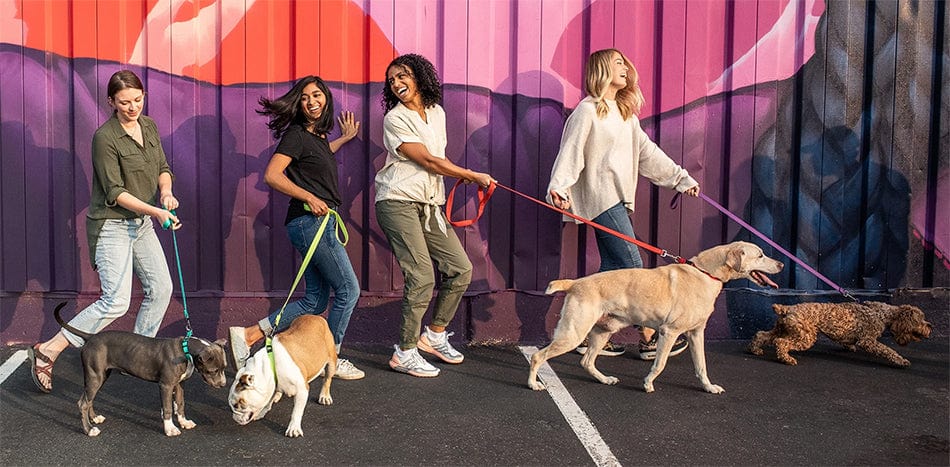Your cart is empty. Let's fix that!


A dog’s love of chewing on things begins at an early age. Puppies need to teethe, which helps relieve the stress and pain of growing new teeth. Your puppy also has a desire to chew because it is fun. Hide your shoes, hide your pillows! While it may lead to some problems for you, you can prevent some of the common problems if you understand how to help a teething puppy.
Puppies start teething around week five or six, which is when their puppy teeth begin to grow in. During this time, you’ll want to find things that they can chew on and start teaching your puppy to chew on those instead of other things, like your shoes. The earlier you can teach your puppy what to chew on, the better. This will also help you manage the pain of growing new teeth, which will make your puppy less irritable.
Puppies stop teething once all of their puppy teeth have fallen out and all of their adult teeth have fully grown in. At this point, your dog won’t chew because of teething issues, he will do it for fun… Ruh Roh! This varies per dog but can happen around six months. Once your dog’s adult teeth have grown in, it is important to start a dental care process like teeth brushing.
While there is a timeline for when your puppy will start teething, there are more obvious signs of when it has already started. There are certain things that puppies do when they start teething, and you can watch for these signs to ensure that you start the teething care process when your puppy is ready. Some of the behaviors that you should watch for include:
Once your puppy starts teething, he or she will begin chewing on things. Anything that is hard enough to be a challenge, but soft enough to degrade when being chewed on becomes a target. Shoes are among the most common victims. If you catch your puppy chewing on things, then you should invest in some of the best teething toys for puppies that you can find. That way, your puppy will chew on those and not your couch. Chew on this, little one!
Puppies often recognize that their teeth are growing in and want to start using them. Unfortunately, this also means that they will start nipping, or playfully biting, people. It is normal for dogs to nip, but it can become a problem if you do not train your dog to avoid nipping people. Uncontrolled nipping can lead to full-scale biting if left unaddressed.
While teething, your dog wants to use his or her new teeth and is also uncomfortable during the whole process. Your puppy may be cranky and agitated, leading to more aggressive behavior. It is important to channel that aggression in a constructive way with chewing toys and other distractions like exercise and play time.
There is a simple method for how to help a teething puppy: get the best teething toys for puppies. Well-made teething toys give your puppy a distraction and a way to use their new teeth. You can teach your puppy better behaviors using those toys as well.
The best puppy toys for teething are the ones that are durable while giving your dog some difficulty. If the toys break too easily, your puppy won’t enjoy them. They also become choking hazards! However, if the toy is too durable, you risk damaging your puppy’s teeth. Here’s a few to consider: